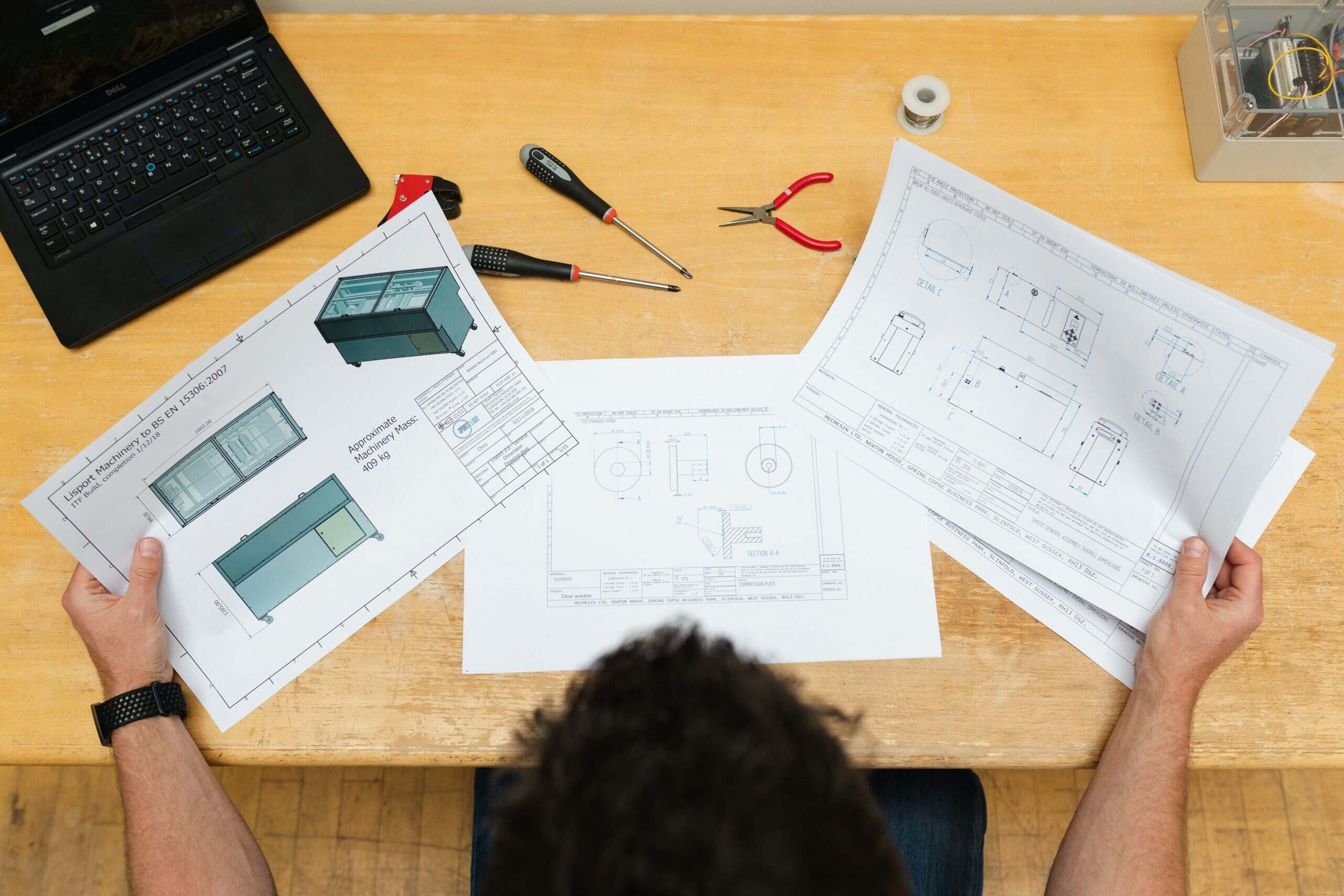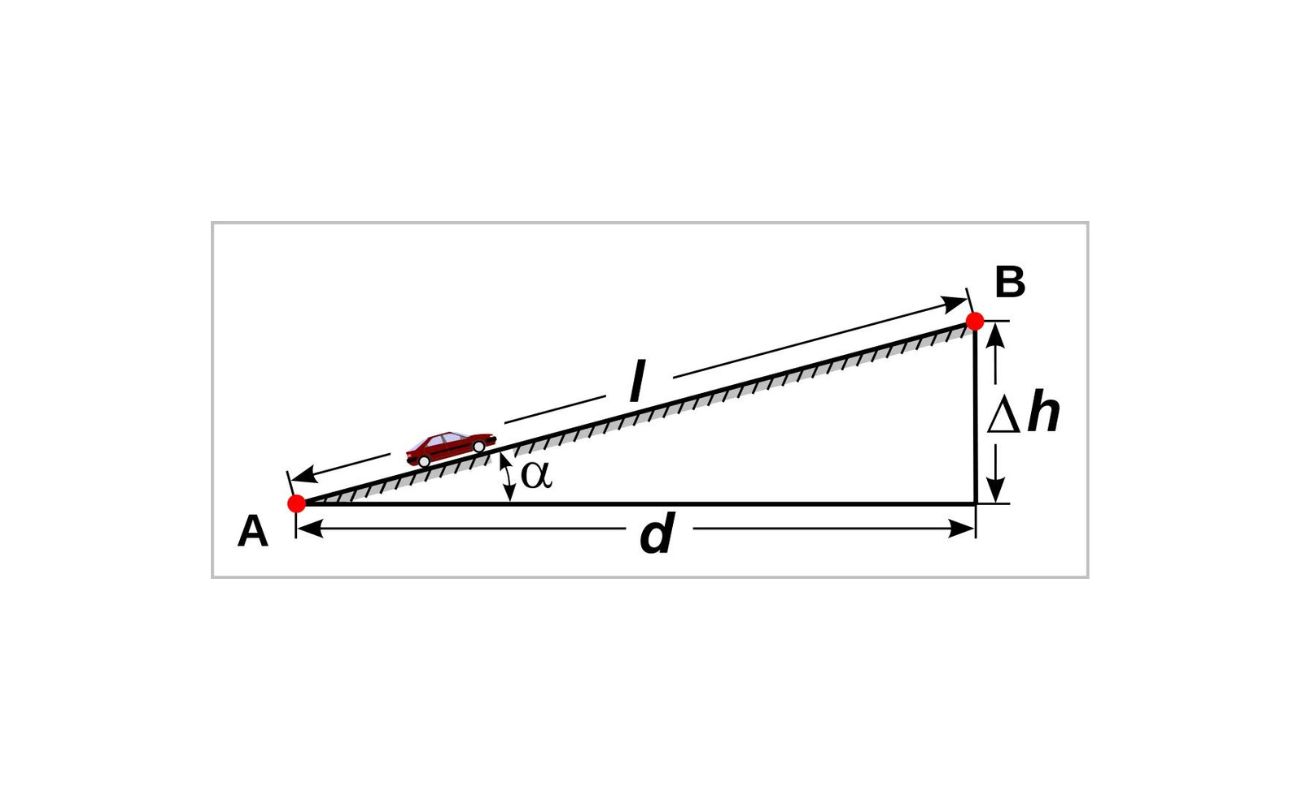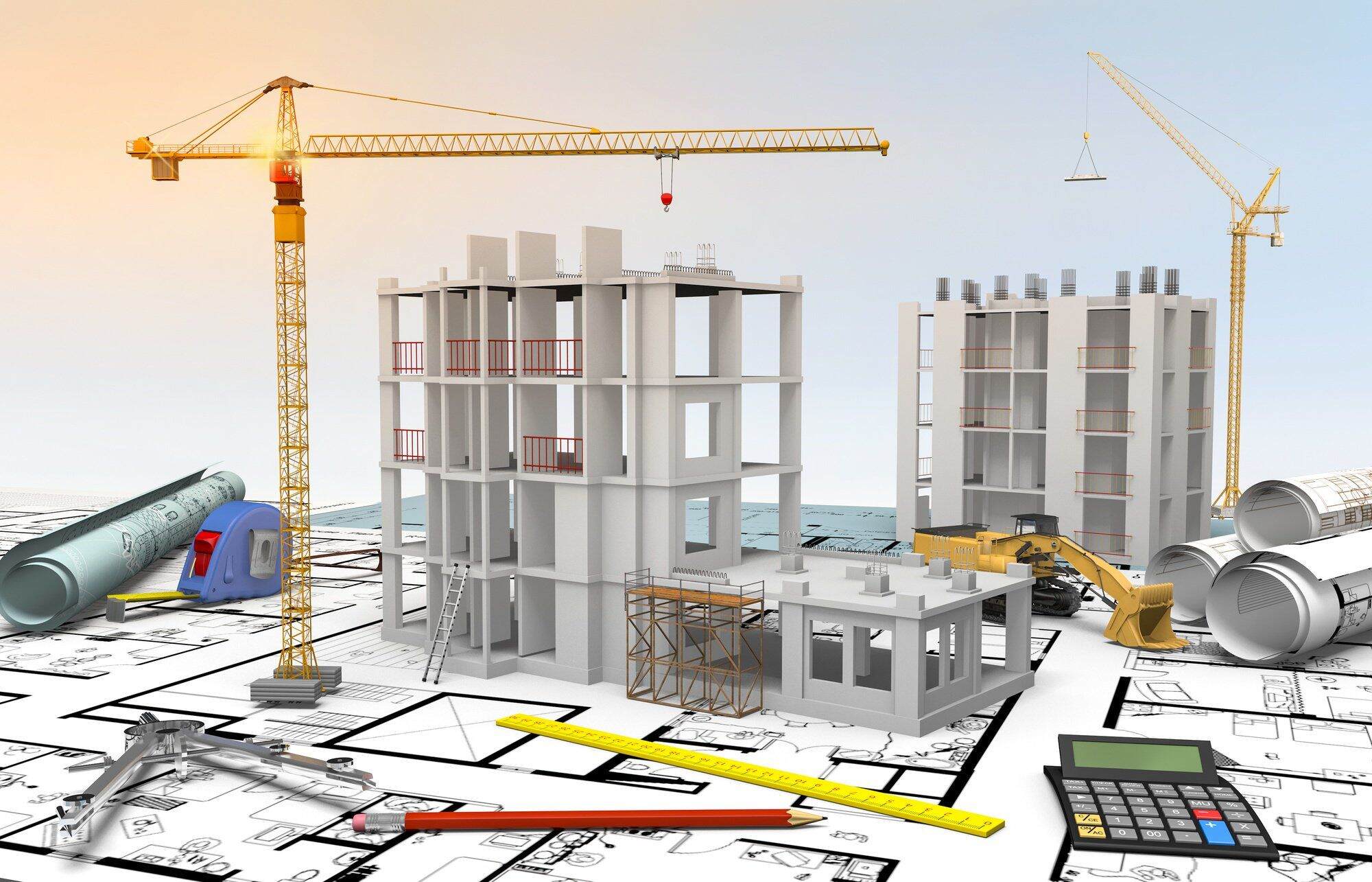Home>diy>Planning & Engineering>What Is The Difference Between Mechanical And Civil Engineering


Planning & Engineering
What Is The Difference Between Mechanical And Civil Engineering
Modified: February 25, 2024
Discover the key distinctions between mechanical and civil engineering disciplines, including their focus on planning and engineering. Gain insights into the various career paths available in these fields.
(Many of the links in this article redirect to a specific reviewed product. Your purchase of these products through affiliate links helps to generate commission for Storables.com, at no extra cost. Learn more)
Introduction
Engineering is a diverse field with various branches that cater to different areas of expertise. Two prominent branches of engineering are Mechanical Engineering and Civil Engineering. While both disciplines share certain similarities, there are significant differences in terms of their focus, education requirements, job roles, and technical skills.
Mechanical Engineering involves the design, development, and maintenance of mechanical systems, including machinery, vehicles, and appliances. It revolves around the principles of physics, materials science, and thermodynamics. On the other hand, Civil Engineering is concerned with the design, construction, and maintenance of infrastructure such as bridges, buildings, roads, dams, and other large-scale projects.
In this article, we will delve deeper into the differences between Mechanical Engineering and Civil Engineering, exploring their education and training requirements, curriculum differences, specialization areas, job roles and responsibilities, technical skills required, tools and technologies used, work environment, as well as salary and job outlook.
By gaining a clearer understanding of these two branches of engineering, you can make informed decisions about which path to pursue based on your interests, skills, and career aspirations.
Key Takeaways:
- Mechanical Engineering focuses on designing mechanical systems like machinery and vehicles, while Civil Engineering is about infrastructure projects such as buildings and roads. Both fields offer promising career opportunities and require specialized skills and knowledge.
- Mechanical Engineers may specialize in areas like automotive engineering and robotics, while Civil Engineers can specialize in structural engineering and transportation planning. Both fields offer diverse career paths with unique focuses and responsibilities.
Definition of Mechanical Engineering
Mechanical Engineering is a branch of engineering that deals with the design, analysis, development, and maintenance of mechanical systems. It encompasses a wide range of areas, including mechanics, materials science, thermodynamics, kinematics, and robotics. This field focuses on understanding and applying the principles of physics to create innovative solutions for mechanical problems.
Mechanical Engineers are responsible for designing, manufacturing, and operating mechanical systems and devices. They work on projects such as automobiles, aircraft, power generation systems, heating and cooling systems, and industrial equipment. By utilizing their knowledge of materials, mechanics, and thermodynamics, they develop efficient and reliable solutions to complex mechanical problems.
One key aspect of Mechanical Engineering is the emphasis on the design process. Mechanical Engineers use computer-aided design (CAD) software to create detailed models of their designs, analyze their performance under different conditions, and make necessary modifications. This allows them to ensure that the final product meets the desired specifications and performs optimally.
Moreover, Mechanical Engineering integrates various disciplines to develop interdisciplinary solutions. For example, Mechanical Engineers may collaborate with electrical engineers to design the electrical systems of a vehicle or work with materials engineers to select the most suitable materials for a particular application.
Overall, Mechanical Engineering plays a crucial role in shaping our modern world by providing innovative solutions that improve efficiency, enhance safety, and promote sustainable practices in various industries.
Definition of Civil Engineering
Civil Engineering is a branch of engineering that focuses on the design, construction, and maintenance of infrastructure projects. It involves the planning, analysis, and implementation of various projects, such as bridges, buildings, roads, dams, airports, and water supply systems. Civil Engineers play a critical role in ensuring the safety, functionality, and sustainability of our built environment.
The scope of Civil Engineering is broad and encompasses several sub-disciplines. These include structural engineering, geotechnical engineering, transportation engineering, environmental engineering, and water resources engineering. Each sub-discipline specializes in specific aspects of infrastructure development and maintenance.
Structural Engineering is concerned with the design and analysis of structures such as buildings, bridges, and dams, ensuring their strength and stability. Geotechnical Engineering focuses on the behavior of soil and rocks, assessing their suitability for construction and developing foundation designs. Transportation Engineering deals with the planning and design of transportation networks and systems, including roads, railways, and airports. Environmental Engineering involves the management and preservation of natural resources and the development of sustainable practices. Water Resources Engineering focuses on the analysis and management of water-related systems, including water supply, wastewater treatment, and flood control.
Civil Engineers work closely with architects, urban planners, and other professionals to bring their design concepts to life. They utilize computer-aided design (CAD) software to create detailed designs and use specialized software for structural analysis, traffic flow simulation, and hydrological modeling. They also need to consider factors such as safety regulations, environmental impact, and cost-effectiveness in their designs.
In addition to design and construction, Civil Engineers are responsible for project management, ensuring that projects are completed within budget and on schedule. They also conduct site inspections, perform quality control, and oversee maintenance and repair activities throughout the lifespan of the infrastructure.
Overall, Civil Engineering plays a pivotal role in shaping our communities and infrastructure. It combines technical knowledge, creativity, and problem-solving skills to create safe and sustainable solutions that improve our quality of life.
Education and Training Requirements
Both Mechanical Engineering and Civil Engineering require a solid educational foundation and specialized training to build a successful career in the respective fields.
To become a Mechanical Engineer, a bachelor’s degree in Mechanical Engineering is typically required. The curriculum includes coursework in mathematics, physics, thermodynamics, materials science, mechanics, and design principles. Students also gain hands-on experience through laboratory work and design projects. Some universities also offer graduate programs, such as Master’s and Ph.D. degrees, for those who wish to pursue advanced research or specialize in a specific area.
In contrast, to become a Civil Engineer, a bachelor’s degree in Civil Engineering is the typical educational requirement. The coursework typically covers subjects such as mathematics, physics, structural analysis, geotechnical engineering, transportation engineering, and environmental engineering. As with Mechanical Engineering, graduate programs are available for those seeking advanced knowledge and specialization.
Both fields of engineering also require practical training and experience. Students may have opportunities for internships or cooperative education programs, where they can gain hands-on experience working on real-world projects. This provides valuable exposure to industry practices and allows students to apply their knowledge in a professional setting.
Furthermore, to become a licensed Professional Engineer (PE), graduates must meet additional requirements, such as passing the Fundamentals of Engineering (FE) exam and accumulating relevant work experience. The requirements for licensure vary by country and state, so it’s important to research and comply with the specific regulations in your location.
Continuing education is also crucial for both Mechanical and Civil Engineers to stay current with advancements in their respective fields. This can be achieved through attending conferences, workshops, and webinars, as well as participating in professional development programs offered by engineering associations and societies.
By obtaining the necessary education and training, aspiring Mechanical and Civil Engineers can ensure that they have the knowledge, skills, and qualifications to pursue a successful career in their chosen field.
Curriculum Differences
The curriculum for Mechanical Engineering and Civil Engineering programs varies to reflect the specific knowledge and skills required in each field.
In Mechanical Engineering, the curriculum focuses on core principles of physics, mechanics, thermodynamics, and materials science. Students take courses that cover topics such as solid mechanics, fluid mechanics, heat transfer, dynamics, control systems, and machine design. They also learn about manufacturing processes, computer-aided design (CAD), and engineering graphics. Additionally, courses in mathematics and computer programming are integrated into the curriculum to develop quantitative and analytical skills.
On the other hand, the curriculum for Civil Engineering encompasses a broader range of subjects due to the diverse nature of civil engineering projects. Students study courses related to structural engineering, geotechnical engineering, transportation engineering, environmental engineering, and water resources engineering. The curriculum includes topics such as structural analysis and design, soil mechanics, traffic engineering, environmental impact assessment, and hydraulics. Students also learn about surveying, construction materials, project management, and engineering economics.
Both Mechanical Engineering and Civil Engineering programs include hands-on laboratory work and design projects. These projects allow students to apply their theoretical knowledge to practical scenarios, fostering critical thinking, problem-solving, and teamwork skills.
While there are similarities in the foundation of mathematics and physics required for both branches of engineering, the specific courses and depth of study differ. Mechanical Engineering places a greater emphasis on subjects like dynamics, thermodynamics, and machine design, while Civil Engineering focuses more on topics such as structural analysis, geotechnical engineering, and transportation systems.
It’s worth mentioning that curriculum differences may vary across institutions. Some universities offer elective courses or specialized tracks within the Mechanical Engineering or Civil Engineering programs, allowing students to tailor their education to a specific area of interest. Furthermore, graduate programs offer the opportunity for further specialization in niche areas of Mechanical or Civil Engineering.
By understanding the curriculum differences, aspiring engineers can make informed decisions when choosing their field of study and align their educational path with their career goals.
Areas of Specialization
Both Mechanical Engineering and Civil Engineering offer a wide range of specialization areas for engineers to delve deeper into a specific field of expertise. These specializations allow engineers to apply their skills and knowledge to solve complex problems in a particular domain.
In Mechanical Engineering, some common specialization areas include:
- Automotive Engineering: Focuses on the design and development of vehicles, including cars, motorcycles, and trucks.
- Aerospace Engineering: Involves the design and manufacturing of aircraft and spacecraft.
- Robotics and Automation: Focuses on the creation of robotic systems and automation technologies for industrial applications.
- Energy Systems: Deals with the generation, conversion, and utilization of energy, including renewable energy sources and energy-efficient systems.
- Biomechanics: Applies mechanical principles to study the movement and mechanics of living organisms, with applications in medical devices and prosthetics.
- Materials Science and Engineering: Focuses on understanding the properties and behavior of materials and their applications in engineering design and manufacturing.
- Fluid Mechanics: Involves the study and analysis of fluids, including their flow properties and their interaction with solid surfaces.
In Civil Engineering, some common specialization areas include:
- Structural Engineering: Focuses on the design and analysis of structures, ensuring their stability and safety.
- Transportation Engineering: Deals with the planning, design, and operation of transportation systems, including roads, railways, and airports.
- Geotechnical Engineering: Involves the study of soil and rock mechanics to support the design of safe and stable foundations for structures.
- Environmental Engineering: Focuses on managing and improving the environment, including aspects such as water and wastewater treatment, pollution control, and sustainable practices.
- Water Resources Engineering: Involves the study and management of water-related systems, including water supply, flood control, and irrigation systems.
- Construction Engineering and Management: Focuses on the planning, execution, and management of construction projects, including cost estimation and project scheduling.
- Urban Planning: Deals with the development and design of cities and urban areas, including land use planning and infrastructure development.
These are just a few examples of the many specialization areas available in Mechanical Engineering and Civil Engineering. Engineers can choose to specialize in a specific field based on their interests, career goals, and market demands.
By specializing in a particular area, engineers can develop deep expertise and become valuable assets in their chosen field.
Mechanical engineering focuses on designing and building mechanical systems, while civil engineering focuses on infrastructure and construction projects. Consider your interests in design and construction when choosing between the two fields.
Typical Job Roles and Responsibilities
Both Mechanical Engineering and Civil Engineering offer a wide range of career opportunities with distinct job roles and responsibilities. Let’s explore some of the typical job roles in each field:
Typical Job Roles in Mechanical Engineering:
- Design Engineer: Responsible for creating detailed designs and specifications for mechanical systems and components.
- Research and Development Engineer: Involved in exploring new technologies, conducting experiments, and developing innovative solutions.
- Manufacturing Engineer: Focuses on optimizing production processes and ensuring efficient manufacturing of mechanical systems.
- Project Engineer: Manages and coordinates engineering projects, ensuring timely completion within budget and meeting quality standards.
- Quality Control Engineer: Monitors and evaluates the performance and quality of mechanical systems to ensure compliance with industry standards.
- Operations Manager: Oversee the day-to-day operations of manufacturing facilities or engineering departments.
- Sales Engineer: Engages with clients, provides technical information, and offers solutions to suit their needs.
Typical Job Roles in Civil Engineering:
- Structural Engineer: Designs and analyzes structures, ensuring their safety and structural integrity.
- Geotechnical Engineer: Investigates soil and rock behavior and provides recommendations for foundation design and construction.
- Transportation Engineer: Plans and designs transportation systems, including roads, bridges, and traffic management systems.
- Environmental Engineer: Focuses on managing and mitigating environmental impacts, such as water and air pollution control, and wastewater treatment.
- Project Manager: Oversees the planning, execution, and completion of construction projects, ensuring adherence to budget and schedule.
- Water Resources Engineer: Manages and designs water-related systems, including water supply networks, flood control systems, and irrigation systems.
- Urban Planner: Works on developing land use plans, zoning regulations, and urban design to create sustainable and functional communities.
These are just a few examples of job roles in Mechanical Engineering and Civil Engineering. Depending on the industry, organizations, and project requirements, job roles may vary. Engineers in both fields are often involved in teamwork, collaboration with architects and other professionals, and communication with clients to ensure successful project outcomes.
It is important for engineers to continue learning and developing their skills throughout their careers to stay updated with the ever-evolving industry demands.
Technical Skills Required
Both Mechanical Engineering and Civil Engineering require a strong foundation in technical skills to effectively perform the job responsibilities in their respective fields. Here are some of the key technical skills required:
Technical Skills in Mechanical Engineering:
- Proficiency in CAD software: Mechanical Engineers should be skilled in using computer-aided design (CAD) software to create detailed models and drawings for their designs.
- Knowledge of materials: Understanding the properties and behaviors of materials is crucial for selecting appropriate materials in designing mechanical systems.
- Mechanical analysis and simulation: The ability to perform mechanical analysis and simulation using software tools to evaluate the structural integrity, thermal performance, and fluid flow in mechanical systems.
- Knowledge of manufacturing processes: Mechanical Engineers need to have an understanding of various manufacturing processes, such as machining, welding, and additive manufacturing.
- Understanding of thermodynamics: Understanding the principles of thermodynamics is essential for designing energy-efficient systems and optimizing performance.
- Knowledge of control systems: Familiarity with control systems and automation enables Mechanical Engineers to design systems that can be controlled and operated effectively.
Technical Skills in Civil Engineering:
- Structural analysis and design: Civil Engineers should have expertise in analyzing and designing structures, considering factors such as load distribution, stability, and safety.
- Geotechnical analysis: Familiarity with geotechnical analysis techniques to evaluate soil behavior and stability for foundation design.
- Transportation planning and design: Understanding transportation engineering principles and software tools to plan and design efficient and safe transportation systems.
- Environmental impact assessment: The ability to assess and mitigate the environmental impact of construction projects and propose sustainable solutions.
- Water resources management: Knowledge of water management principles, including water supply systems, flood control, and wastewater treatment.
- Project management: Proficiency in project management tools and techniques to effectively plan, execute, and complete engineering projects.
These technical skills are crucial for engineers to excel in their roles and contribute effectively to their respective fields. However, it’s important to note that technical skills must be complemented by strong analytical, problem-solving, and communication skills to handle the challenges faced in real-world engineering scenarios.
Engineers should also stay updated with the latest advancements in their fields and continually enhance their technical skills through continuous learning and professional development opportunities.
Tools and Technologies Used
Both Mechanical Engineering and Civil Engineering rely on various tools and technologies to effectively carry out their work. These tools and technologies enable engineers to design, analyze, and implement their projects. Here are some of the commonly used tools and technologies in each field:
Tools and Technologies in Mechanical Engineering:
- Computer-Aided Design (CAD) Software: Software tools such as AutoCAD, SolidWorks, and CATIA are used for creating detailed 2D and 3D models of mechanical designs.
- Computer-Aided Engineering (CAE) Software: CAE tools like ANSYS, Abaqus, and COMSOL allow for structural analysis, thermal analysis, and fluid dynamics simulations.
- Manufacturing Tools: Machinery such as lathes, milling machines, and 3D printers are utilized to fabricate prototypes and manufacture mechanical components.
- Data Acquisition and Measurement Instruments: Instruments like strain gauges, accelerometers, and pressure sensors are used to collect data for analysis and testing in various research and development projects.
- Control Systems: Software and hardware tools used to implement and control automated systems, such as Programmable Logic Controllers (PLCs) and Human-Machine Interface (HMI) panels.
- Mathematical and Statistical Software: Tools like MATLAB and Python are used for data analysis, mathematical modeling, and simulation of complex mechanical systems.
Tools and Technologies in Civil Engineering:
- Building Information Modeling (BIM) Software: BIM tools like Revit and ArchiCAD are used for designing and visualizing building structures and infrastructure projects.
- Geotechnical Analysis Software: Tools such as PLAXIS and GeoStudio are used for geotechnical analysis, slope stability analysis, and foundation design.
- Geographic Information System (GIS) Software: GIS tools like ArcGIS and QGIS are utilized for spatial analysis, mapping, and data visualization in projects involving land use planning and transportation systems.
- Structural Analysis and Design Software: Applications such as ETABS, STAAD.Pro, and SAP2000 are used to perform structural analysis, design, and load calculations for buildings and bridges.
- Project Management Software: Tools like Microsoft Project and Primavera P6 are used to plan, schedule, and manage engineering projects, including resource allocation and time tracking.
- Hydraulic Modeling Software: Software tools like HEC-RAS and EPANET are used for hydraulic analysis and modeling of water flow in rivers, channels, and water distribution systems.
These tools and technologies are continually evolving, and it’s important for engineers to stay updated with the latest advancements in order to streamline their work processes and enhance productivity.
Additionally, with the rise of digital transformation, engineers are increasingly leveraging emerging technologies such as artificial intelligence, Internet of Things (IoT), and cloud computing to optimize design processes, monitor structures, and improve efficiency in both Mechanical Engineering and Civil Engineering.
Read more: What Is A Civil Engineering Technician
Work Environment
The work environment for Mechanical Engineering and Civil Engineering can vary based on factors such as industry, project type, and organization size. Let’s explore the typical work environments in each field:
Work Environment in Mechanical Engineering:
- Engineering Offices: Many Mechanical Engineers work in office settings, where they collaborate with colleagues, utilize computer-aided design (CAD) software, and conduct simulations and analysis.
- Research and Development Labs: Engineers involved in research and development may work in laboratory environments, conducting experiments, prototyping, and testing new technologies and designs.
- Manufacturing facilities: Some Mechanical Engineers work in manufacturing environments, overseeing the production process and ensuring quality control of the mechanical systems being manufactured.
- On-site Visits: Mechanical Engineers may need to visit construction sites, factories, or clients’ locations to assess project requirements, conduct inspections, or provide technical support.
- Travel: Depending on the nature of the job, Mechanical Engineers may occasionally travel to remote locations or client sites for project-related activities or meetings.
Work Environment in Civil Engineering:
- Engineering Firms: Many Civil Engineers are employed by engineering consulting firms, where they work in office environments, collaborating with teams on design, analysis, and project management.
- Construction Sites: Civil Engineers often visit construction sites to oversee construction activities, ensure adherence to design specifications, and address any issues that may arise during the construction process.
- Government Agencies: Civil Engineers working for government agencies may spend time in offices, involved in planning and regulatory aspects of infrastructure projects, as well as conducting site visits and inspections.
- Field Work: Civil Engineers may need to conduct fieldwork for activities such as site surveys, soil sampling, environmental assessments, or monitoring of infrastructure performance.
- Client Meetings: Civil Engineers often meet with clients, stakeholders, architects, and contractors to discuss project requirements, provide updates, and address any concerns.
Both Mechanical and Civil Engineers may work on individual projects or be part of multidisciplinary teams collaborating with professionals from other engineering disciplines, architects, and project managers. They may also have opportunities to work internationally on global projects, depending on their roles and organizations.
The work environment can vary in terms of the pace of work, project deadlines, and client demands. Engineers in both fields should be able to adapt to changing conditions and manage their time effectively to meet project goals.
It’s important to note that safety is a top priority in both Mechanical Engineering and Civil Engineering, and engineers must adhere to safety protocols and regulations to ensure the well-being of themselves and others involved in the projects.
By understanding the work environment, engineers can make informed decisions about the type of projects and industries they want to work in, ensuring a fulfilling and rewarding career.
Salary and Job Outlook
The salary and job outlook for Mechanical Engineering and Civil Engineering professionals can vary based on factors such as experience, specialization, geographic location, industry, and the overall economic conditions. Here’s an overview of the salary range and job outlook for each field:
Salary for Mechanical Engineers:
The salary of Mechanical Engineers can vary significantly depending on factors such as education, experience, job role, and industry. According to the U.S. Bureau of Labor Statistics (BLS), the median annual wage for Mechanical Engineers was $90,160 in May 2020. The salary range typically falls between $58,160 and $113,420 per year, with the top 10% earning more than $136,550.
Salary for Civil Engineers:
Like Mechanical Engineering, the salary for Civil Engineers can vary based on several factors. According to the BLS, the median annual wage for Civil Engineers was $88,570 in May 2020. The salary range typically falls between $57,430 and $144,560 per year, with the top 10% earning more than $117,130.
Job Outlook for Mechanical Engineers:
The job outlook for Mechanical Engineers is generally positive. According to the BLS, employment of Mechanical Engineers is projected to grow 4 percent from 2019 to 2029, about as fast as the average for all occupations. The demand for Mechanical Engineers is driven by industries such as automotive manufacturing, aerospace, renewable energy, and robotics, as well as the need for advancements in technology and efficiency. Job prospects may be best for those with a strong background in computer-aided design, additive manufacturing, and advanced materials.
Job Outlook for Civil Engineers:
The job outlook for Civil Engineers is also promising. The BLS expects employment of Civil Engineers to grow 2 percent from 2019 to 2029, slower than average for all occupations. However, the demand for infrastructure maintenance, environmental protection, and water resources will continue to drive job opportunities in this field. Additionally, a growing focus on sustainable practices and infrastructure upgrades will contribute to the demand for Civil Engineers. Job prospects may be better for those with specific specializations or those willing to work in emerging fields such as environmental and water resources engineering.
It’s worth noting that job outlook and salary can vary by location and industry. Major urban areas, industries with high demand, or regions with significant infrastructure projects may offer more job opportunities and potentially higher salaries for engineers.
Considering the essential role played by Mechanical Engineers and Civil Engineers in designing, developing, and maintaining infrastructure, the job outlook for professionals in both fields remains positive.
It’s important for professionals to stay updated with the latest technologies, advancements, and industry trends to stay competitive in the job market and enhance their career prospects.
Conclusion
Mechanical Engineering and Civil Engineering are two diverse branches of engineering that offer exciting career opportunities with unique focuses and responsibilities.
Mechanical Engineers play a vital role in designing, developing, and maintaining mechanical systems such as machinery, vehicles, and appliances. They utilize their knowledge of materials science, mechanics, and thermodynamics to create innovative solutions that improve efficiency and functionality.
Civil Engineers, on the other hand, are responsible for the design, construction, and maintenance of infrastructure projects such as buildings, roads, bridges, and water systems. They ensure the safety, sustainability, and functionality of our built environment.
Both branches of engineering require a solid educational foundation, specialized training, and a range of technical skills. Mechanical Engineering focuses on subjects such as mechanics, thermodynamics, and materials science, while Civil Engineering covers disciplines such as structural engineering, transportation engineering, and environmental engineering.
Engineers in both fields can choose from various areas of specialization, allowing them to delve deeper into specific domains. Mechanical Engineers may specialize in automotive engineering, robotics, or energy systems, while Civil Engineers can specialize in structural engineering, transportation planning, or environmental engineering, among others.
The work environments for Mechanical Engineering and Civil Engineering professionals can vary. Mechanical Engineers may work in offices, research labs, or manufacturing facilities, while Civil Engineers may split their time between offices, construction sites, and client meetings.
In terms of salary and job outlook, both fields offer promising opportunities. The demand for Mechanical and Civil Engineers is driven by factors such as technological advancements, infrastructure development, and sustainability practices. While the job outlook for Mechanical Engineers is projected to grow at an average rate, the demand for Civil Engineers is expected to grow slightly slower. However, the need for infrastructure maintenance, environmental protection, and sustainable practices will continue to drive job opportunities in Civil Engineering.
In conclusion, both Mechanical Engineering and Civil Engineering offer exciting career paths with ample opportunities for growth and impact. By pursuing education and training in these fields and continuously enhancing their technical skills, aspiring engineers can embark on fulfilling careers that contribute to the advancement and improvement of the world we live in.
Frequently Asked Questions about What Is The Difference Between Mechanical And Civil Engineering
Was this page helpful?
At Storables.com, we guarantee accurate and reliable information. Our content, validated by Expert Board Contributors, is crafted following stringent Editorial Policies. We're committed to providing you with well-researched, expert-backed insights for all your informational needs.














0 thoughts on “What Is The Difference Between Mechanical And Civil Engineering”